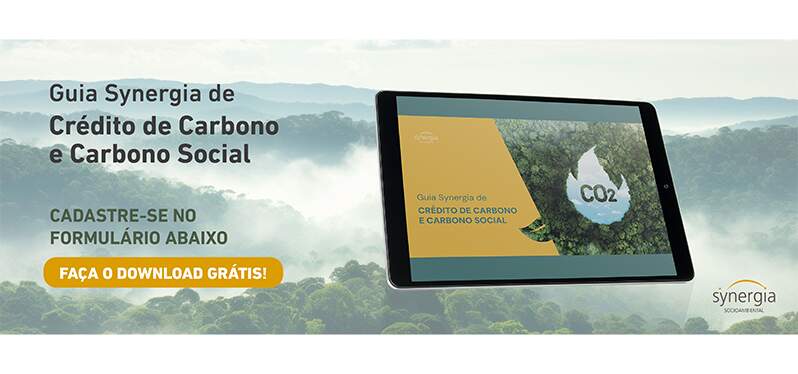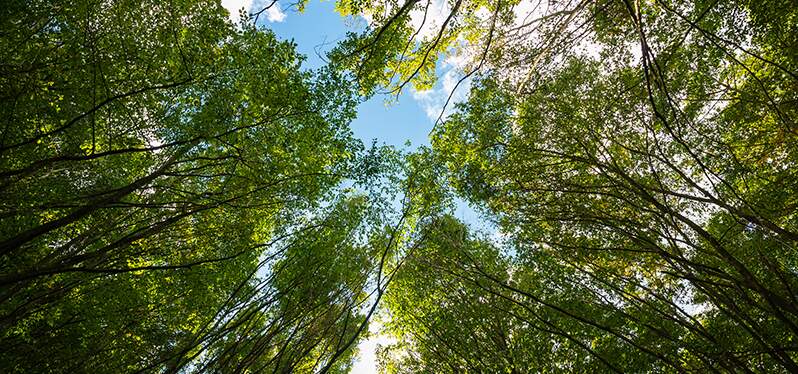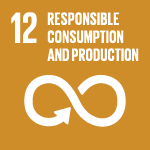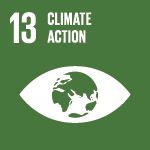Posted in: 12/19/2023
Carbon reduction and removal projects generate visible and important environmental benefits, but they have missed the opportunity to participate in a new development model and further increase the effectiveness of projects with the participation and protagonism of surrounding communities .
According to Aliança Brasil NBS (2023), Brazil has the potential to represent 15% of global opportunities in nature-based solutions (SBN) , and this can be materialized in projects that reduce or remove carbon, which are distributed across public areas and private areas.
From a market perspective, according to McKinsey & Company (2021), it is estimated that the value of the voluntary carbon market will be around US$50 billion (more conservative) to US$100 billion by 2030 . Brazil may represent from 5% to 37.5% of this market.

The carbon linked to SBN is a promise to align the economy with the standing forest . And, in fact, even with all the criticism [1] and revisions of voluntary market methodologies and standards, the contribution of projects that reduce and remove carbon has a very significant effect on climate impact mitigation .
However, as it is a growing market, the integrity and quality of credits must be a requirement. And this is directly associated with social responsibility and biodiversity. A disorderly growth of projects – Reducing Emissions from Deforestation and Forest Degradation (REDD+) or large-scale restoration – can lead to a scenario with technical mistakes, damage to communities and an overestimated contribution to biodiversity.
When we think about carbon reduction and removal , it is possible to link it to the speech reproduced by Chico Mendes , “Ecology without class struggle is gardening”, which reinforces that the root of the environmental problem in Brazil , as well as in other countries in Latin America or in development, it is social .
In other words, it is not possible to establish strategies for conservation and mitigation of climate impact without considering the people involved in this chain and the entire history of use and occupation of the territory.
Although there has been much progress in the development of REDD+ and forest restoration projects, and their safeguards and co-benefits, and we have excellent project examples [2] , according to Milne et. al. (2019), there is still a way to go.
This is because social issues and forest governance are very complex, they include issues of land ownership, land conflict, corruption, lack of transparency, invasion of indigenous lands, methodological barriers to calculate social baseline, prior consultations, approvals with bodies such as Funai, Incra, in the case of Brazil, among other problems, and needs to be carefully evaluated in each project reality .

Furthermore, Myers et al. (2018) reinforces that carrying out an avoided deforestation project limited to a technical look at justice (or equity) ending in distributive terms through the sharing of benefits is not enough and can doom the project to failure.
It is necessary to understand the social complexity of territories , their claims and be timely active so that people can achieve parity of participation in land use change, calling them to deliberation . Opening a space for constant dialogue can represent a positive and political transformation in the territory , and conservation projects can be drivers of this movement. Otherwise, the proponents will be left in an environment of unresolved conflict.
Although studies focus more on REDD+, the same logic applies to forest restoration. To be successful, it is necessary to consider a participatory process , where communities are protagonists in the process of building a conservation project, regardless of whether the property is private or public.
Communities must be involved in structuring alternatives that culminate in an economy based on socio-biodiversity, so that they appropriate and value the standing or reforested forest and understand its importance for local development, growth and empowerment of their families and the territory.

In Brazil , when it comes to the Amazon – where most REDD+ projects are located – this becomes even more relevant. A young person, starting a career today in the territory, finds the possibility of working in sectors that, tied to the conventional economy , see the forest as a problem.
Of formal jobs, around 60% are in livestock farming, 30% in agriculture and only 5% in forestry production. When looking at the unemployment rate , which reaches 40% in the region, double the national average for young people between 25 and 29 years old, it is concluded that the forest is not seen as a professional option (BINA, 2023).
Movements that propose environmental solutions are strictly necessary and urgent. However, Brazil is a country with extreme social vulnerability and with a significant portion of the 30 million Amazonians drawn into the deforestation chain .
REDD+, or forest restoration, cannot be an exclusively environmental movement , it needs to be designed from within, involving people, small landowners, settlers, indigenous people, extractivists, riverside dwellers and local communities so that it is a effective solution in combating the climate crisis and driving real change.
Text prepared by Gabriela Goulart,
specialist in socio-environmental management at Synergia Socioambiental
References
Aliança Brasil NBS, Guide to good practices in consultations with indigenous peoples, traditional and quilombola communities, Aliança Brasil NBS, São Paulo: 2023
Milne, S., Mahanty, S., To, P., Dressler, W., Kanowski, P., & Thavat, M. (2019). Learning from “currently existing” REDD+: A synthesis of ethnographic findings . Conservation and Society, 17(1), 84–95.
Myers, R., Larson, A.M., Ravikumar, A., Kowler, L.F., Yang, A., & Trench, T. (2018). Messiness of forest governance: How technical approaches suppress politics in REDD+ and conservation projects. Global Environmental Change, 50, 314–324.
BINA, Why carbon projects cannot neglect social issues, Reset: 2023
[1] The Guardian reported at the beginning of 2023 that more than 90% of carbon credits registered with Verra did not bring real carbon benefits and the credits were overestimated. Verra responded to The Guardian saying that the method used by the researchers was inconsistent and did not take into account the local reality of the projects and reported that it makes revisions and continually improves its methodologies, however, these criticisms led to a process of critical and in-depth review of the institution’s methodologies. Verra’s statement and the review of research carried out by The Guardian were evaluated by other researchers who reinforced Verra’s defense.
[2] Example: https://biofix.co/pt/portafolio/ilha-do-bananal-redd/ or https://www.carbonext.com.br/



Sign up and receive our news.